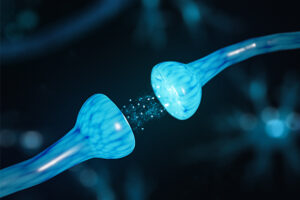Psychiatry
Tardive Dyskinesia
Choosing the Right Treatment for Tardive Dyskinesia
Overview
The introduction of the vesicular monoamine transporter 2 (VMAT2) inhibitors valbenazine and deutetrabenazine has marked a sea change in the management of tardive dyskinesia (TD). Patients who are experiencing distress or functional impairment due to TD now have effective options for treatment.
How would you describe the history of TD treatment, and how do you approach TD treatment today given the current landscape?
Andrew J. Cutler, MD
|
|
“ . . . 2017 was particularly exciting because 2 new treatments were approved that we can use for TD without having to change a psychiatric regimen that is working well for the patient, and this can make really important differences in patients’ lives.”
Historically, we did not have very effective treatments for TD, and recommendations for managing TD often involved the dopamine receptor–blocking agents (DRBAs) themselves (eg, decreasing the dose of the DRBA or stopping the DRBA altogether, if possible). We used to switch some patients with TD to clozapine because it has a much lower risk of causing TD. This did not always work, however, which was frustrating because we did not have much else to offer our patients.
In the 2013 American Academy of Neurology treatment guidelines, none of the agents for TD had level A evidence (ie, must be recommended), and there was level B evidence (ie, should be considered) supporting clonazepam. At that time, a highly purified, standardized formulation of Ginkgo biloba also had level B support, based on a single study conducted in China. Amantadine and tetrabenazine (a VMAT2 inhibitor) were listed as level C (ie, might be considered). Many other agents were cited that were considered to have modest or moderate efficacy based on limited evidence (eg, vitamin D, certain anticholinergic drugs, and several GABAergic drugs, including muscle relaxants). Botulinum toxin injections were recommended for focal treatment, and deep brain stimulation was recommended for very severe recalcitrant TD.
Then, in 2017, 2 VMAT2 inhibitors (ie, valbenazine and deutetrabenazine) received US Food and Drug Administration (FDA) approval for the treatment of TD. Both agents have strong evidence of efficacy and tolerability, not only short-term data (12-week placebo-controlled trials) but also long-term extension data. In 2018, the American Academy of Neurology guidelines were updated to include the VMAT2 inhibitors, which were the first—and are currently still the only—treatments to be FDA approved and to have level A evidence (ie, established as effective and must be recommended). The updated guidelines continued to mention the other medications for TD, but, really, the watershed moment was the 2017 FDA approvals of valbenazine and deutetrabenazine.
Because these agents are similar in efficacy and tolerability, the differences between them really come down to things such as dosing. Valbenazine is a once-daily medication given with or without food, whereas deutetrabenazine is given twice daily with food. There are also differences in drug interaction potential, as deutetrabenazine is metabolized only by cytochrome P450 2D6 (CYP2D6), whereas valbenazine is metabolized by both CYP2D6 and CYP3A4. Each can be added to the patient’s psychiatric regimen without perturbing the underlying psychiatric illness.
So, 2017 was particularly exciting because 2 new treatments were approved that we can use for TD without having to change a psychiatric regimen that is working well for the patient, and this can make really important differences in patients’ lives.
Leslie Citrome, MD, MPH
|
|
“The decision to use a VMAT2 inhibitor will depend on various factors. For moderate to severe TD, a VMAT2 inhibitor is routinely prescribed. However, even in mild cases of TD, if it causes distress or any functional impairment, the patient can also be treated with a VMAT2 inhibitor.”
Dr Cutler nicely summarized the history leading up to the FDA approvals of the new VMAT2 inhibitors. I would add that, even today, the routine management of TD is nuanced because adopting the right treatment requires that we recognize the TD and assess its impact in each patient. If we identify dyskinetic movements, then we consider treatment.
The decision to use a VMAT2 inhibitor will depend on various factors. For moderate to severe TD, a VMAT2 inhibitor is routinely prescribed. However, even in mild cases of TD, if it causes distress or any functional impairment, the patient can also be treated with a VMAT2 inhibitor. This is explained in the treatment guidelines for schizophrenia from the American Psychiatric Association, and it was also included in the Delphi consensus panel guidelines. The newly revised 2022 Diagnostic and Statistical Manual of Mental Disorders, Fifth Edition, Text Revision includes updated coverage of drug-induced movement disorders, particularly TD, noting the importance of considering treatment with VMAT2 inhibitors. It also states that the use of anticholinergics such as benztropine is inappropriate for TD and can make it worse.
Valbenazine and deutetrabenazine are both reversible inhibitors of VMAT2, but their mechanisms are a bit different, and there is anecdotal evidence that if 1 VMAT2 inhibitor does not work, the other agent might. As per the product label instructions, deutetrabenazine is flexibly titrated up to an effective, well-tolerated dose. Clinical trials have established that there is a certain minimal dose, likely 24 mg per day, but we can titrate up to 48 mg per day based on individual response. Prescribing valbenazine uses a different approach, as informed by the pivotal study examining valbenazine 40-mg or 80-mg doses, where the 80-mg dose resulted in a greater reduction of TD when comparing groups of patients randomized to either dose. Thus, product labeling advises prescribing valbenazine 40 mg per day for 1 week and then increasing the dose to 80 mg per day. However, in clinical practice, there are individual patients with TD who do well with 40 mg per day. Further, there is now a 60-mg dose that has become available. There are no direct comparisons of valbenazine and deutetrabenazine, but, based on how they both performed against placebo, their overall efficacy appears to be similar.
Rakesh Jain, MD, MPH
|
|
“We know more about the pathophysiology of TD today, and we now have treatment options that are highly effective in many patients. Patients and clinicians are more hopeful. The recognition of the disorder has increased, and there is so much new energy in the world of TD.”
My colleagues have nicely summarized the history and the current landscape. The era of modern-day TD treatment was essentially born in a flash in 2017—a pivotal, landmark year. For the very first time, 2 well-studied, FDA-approved treatment options became available. Before that, the options for the treatment of TD were very limited.
Strategies in the absence of effective treatment actually had the potential to be detrimental. For example, antipsychotics might have been switched inappropriately in an effort to reduce TD symptoms, an anticholinergic agent might have been given inappropriately, or, perhaps, a benzodiazepine might have been prescribed inappropriately. Alternatively, because of the lack of effective therapies, TD may have been overlooked, or there may have been inertia to overcome in making a diagnosis for something that presumably could not be treated effectively.
Everything changed in 2017, so my view of the landscape now is that of pre– and post–modern-day VMAT2 inhibitors. This has changed the treatment landscape to the point that it is currently unrecognizable to those of us who have been in the field for some time. We know more about the pathophysiology of TD today, and we now have treatment options that are highly effective in many patients. Patients and clinicians are more hopeful. The recognition of the disorder has increased, and there is so much new energy in the world of TD.
References
American Psychiatric Association. Diagnostic and Statistical Manual of Mental Disorders. 5th ed, text revision. American Psychiatric Association; 2022.
Anderson KE, Stamler D, Davis MD, et al. Deutetrabenazine for treatment of involuntary movements in patients with tardive dyskinesia (AIM-TD): a double-blind, randomised, placebo-controlled, phase 3 trial. Lancet Psychiatry. 2017;4(8):595-604. doi:10.1016/S2215-0366(17)30236-5
Bhidayasiri R, Fahn S, Weiner WJ, Gronseth GS, Sullivan KL, Zesiewicz TA; American Academy of Neurology. Evidence-based guideline: treatment of tardive syndromes: report of the Guideline Development Subcommittee of the American Academy of Neurology. Neurology. 2013;81(5):463-469. doi:10.1212/WNL.0b013e31829d86b6
Bhidayasiri R, Jitkritsadakul O, Friedman JH, Fahn S. Updating the recommendations for treatment of tardive syndromes: a systematic review of new evidence and practical treatment algorithm. J Neurol Sci. 2018;389:67-75. doi:10.1016/j.jns.2018.02.010
Caroff SN, Citrome L, Meyer J, et al. A modified Delphi consensus study of the screening, diagnosis, and treatment of tardive dyskinesia. J Clin Psychiatry. 2020;81(2):19cs12983. doi:10.4088/JCP.19cs12983
Citrome L. Clinical management of tardive dyskinesia: five steps to success. J Neurol Sci. 2017;383:199-204. doi:10.1016/j.jns.2017.11.019
Factor SA, Remington G, Comella CL, et al. The effects of valbenazine in participants with tardive dyskinesia: results of the 1-year KINECT 3 extension study. J Clin Psychiatry. 2017;78(9):1344-1350. doi:10.4088/JCP.17m11777
Keepers GA, Fochtmann LJ, Anzia JM, et al. The American Psychiatric Association practice guideline for the treatment of patients with schizophrenia. Am J Psychiatry. 2020;177(9):868-872. doi:10.1176/appi.ajp.2020.177901
Marder SR, Singer C, Lindenmayer J-P, et al. A phase 3, 1-year, open-label trial of valbenazine in adults with tardive dyskinesia. J Clin Psychopharmacol. 2019;39(6):620-627. doi:10.1097/JCP.0000000000001111
Sajatovic M, Alexopoulos G, Burke J, Farahmand K, Siegert S. The effects of valbenazine on tardive dyskinesia in older and younger patients. Int J Geriatr Psychiatry. 2020;35:69-79. doi:10.1002/ gps.5218
Sajatovic M, Wilhelm A, Finkbeiner S, et al. Long-term safety and efficacy of deutetrabenazine in younger and older patients with tardive dyskinesia. CNS Spectr. 2021;26(2):157-158. doi:10.1017/ S1092852920002527.
Zhang W-F, Tan Y-L, Zhang X-Y, Chan RCK, Wu H-R, Zhou D-F. Extract of Ginkgo biloba treatment for tardive dyskinesia in schizophrenia: a randomized, double-blind, placebo-controlled trial. J Clin Psychiatry. 2011;72(5):615-621. doi:10.4088/JCP.09m05125yel













